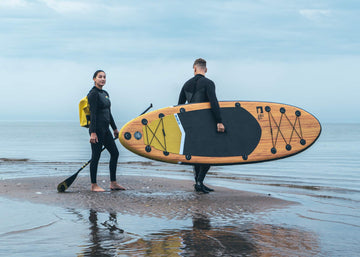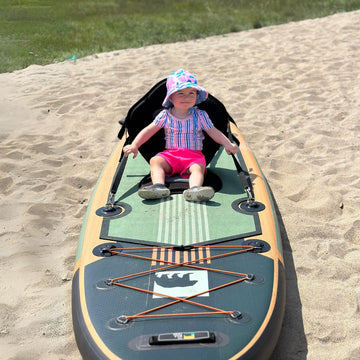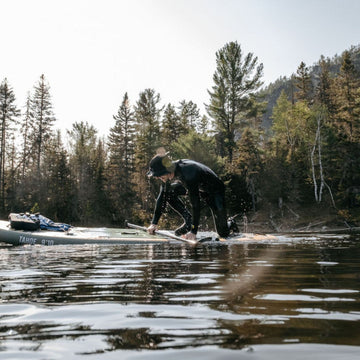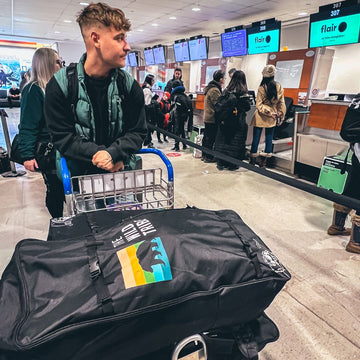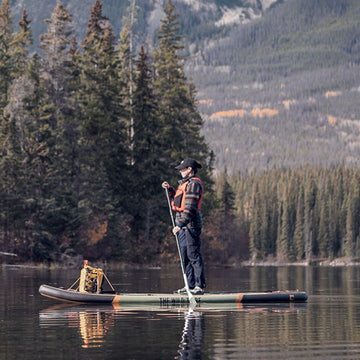5 questions you should ask yourself before buying your wetsuit
In this article, the Quebec SUP team answers your questions! Don't forget to get your wetsuit< /a> and read our cold water SUP 101 guide!

Wetsuit Accessories Every Paddler Needs to Know

Why invest in a quality wetsuit?
1. Elasticity of neoprene 🤸♂️
It's all about movement, especially in SUP! The higher the quality of the elasticity, the greater your comfort and ease will be. A special mention for Yamamoto Neoprene - the star of SUP and surf wetsuits, adored for its unparalleled flexibility.
2. The ecological footprint 🌍
Oil or limestone? The choice of raw material may vary, but if you are like us, a bit eco-friendly, aim for a greener option!
3. Use and frequency 📅
A little friendly advice: if SUP is more than a simple Sunday passion for you, bet on the quality. She will be there every time you go out.
4. Water temperature ❄️🌡️
This is THE determining factor. Suits vary in thickness, often represented by two numbers, such as 3/2mm or 4/3mm. The first number? This is for thickness at body level. The second? Arms and legs. So, before diving, make sure you adapt your wetsuit to the temperature of the waves.
Refer to the table here to assess your needs! 📊
5. Sustainability vs Price 💰
Sometimes paying the price can be a wise investment in the long term.
6. Good deals 🏷️
Stay tuned for promotions. Who said that quality always rhymes with big budget?

The paddler's golden rule
If you're considering taking lessons with a pro, keep this in mind: if the water is below 15°C, expect either to be loaned neoprene clothing or We recommend that you wear one. So, make it a reflex!
When the mercury drops, neoprene rises.
Ride with caution and always in style, the Quebec SUP team reminds you! 🏄♂️🤙
The design features of the suit
1. Thickness:Indicated in millimeters (mm), the thickness determines the insulating capacity of the suit. For example, a 4/3mm wetsuit has a thickness of 4mm on the body and 3mm on the arms and legs.
2. Sewing Type:Flatlock: Flat plates that create a comfortable but less waterproof seam. Sewn and glued (GBS): More waterproof than flatlock, the edges are glued then sewn to prevent infiltration. Taped seams: Even more waterproof, the seams are also reinforced on the inside with tape.
3. Closure:Back zip: Zipper at the back, more traditional and easy to put on. Chest zip: Zipper at the front, offers better waterproofing and more freedom of movement. Zip-free: Without zipper for maximum flexibility.
4. Neoprene type: Standard neoprene: The most common, offers good insulation. Limestone-based neoprene: More elastic and lightweight, offers better thermal insulation. Ecological neoprene: Made from renewable materials like natural rubber or based on vegetable oils.
5.Internal lining: Some suits have thermal liners for added warmth, often placed at torso level.
6.Panels: Modern wetsuits use strategically placed panels to increase flexibility in certain areas like the arms or knees.
7. Knee reinforcements: To increase durability, many suits have reinforcements at the knees.
8. Col: A well-fitted collar prevents water from seeping in. Some are lined with a softer material to prevent irritation.
When purchasing a wetsuit, it is essential to choose it based on your activity (surfing, diving, sailing) and the conditions in which you plan to use it. A suitable wetsuit guarantees a pleasant and safe experience in the water.

